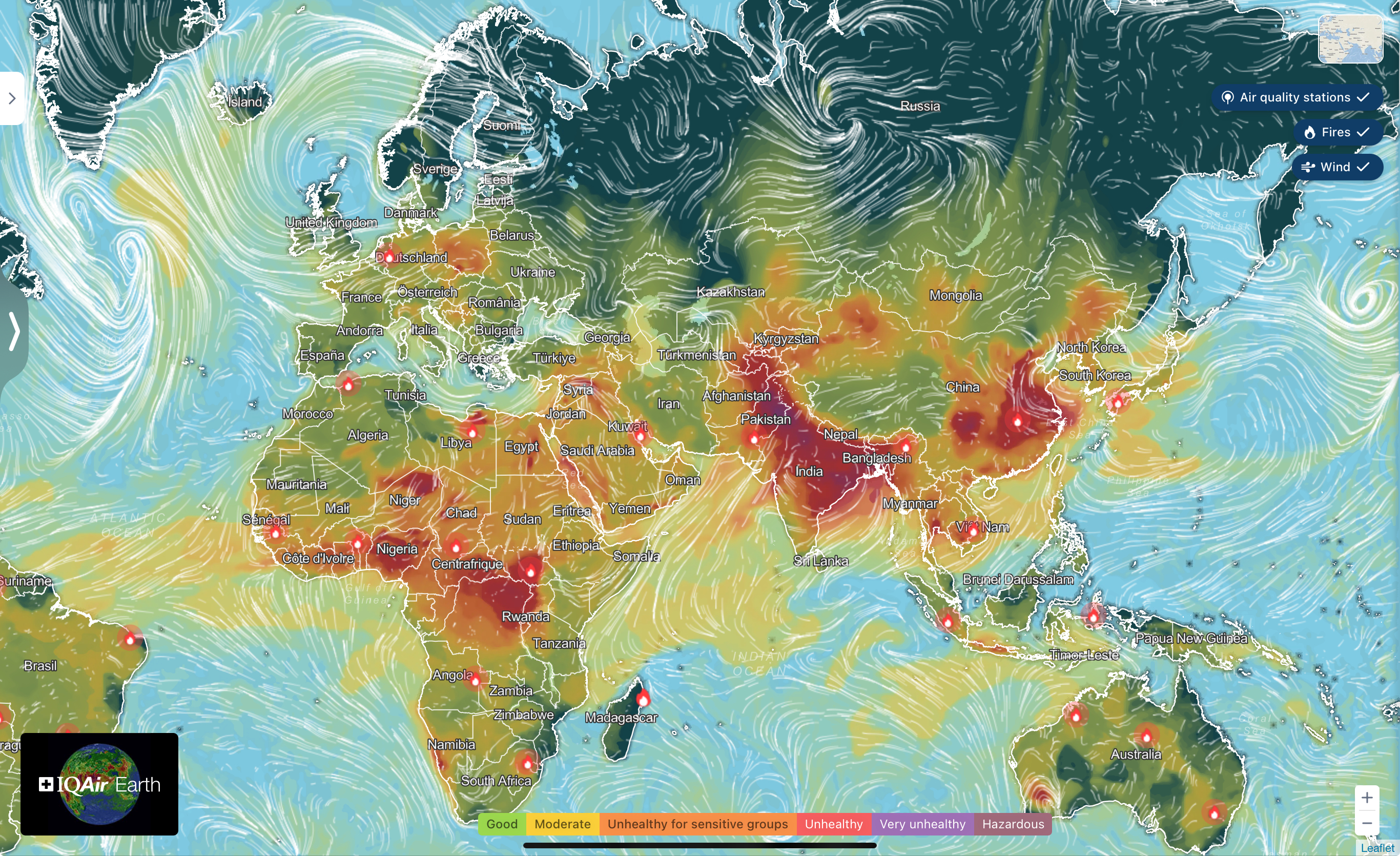In recent years, the issue of smog has gained significant attention in Pakistan, particularly in Lahore, where the impact has been severe. To shed light on this environmental challenge and the efforts being made to address it, Daryo spoke with Naseem-Ur-Rehman Shah, the Director and Focal Person for the media campaign on environmental protection in Lahore.

Naseem-Ur-Rehman Shah highlighted that the smog season in Lahore typically spans from the end of October to the end of November. This phenomenon has been observed not only in Pakistan but also in neighboring countries like India and Bangladesh. During this period, a thick layer of smog engulfs the environment, affecting air quality and visibility.
Causes of Smog
When questioned about the specific reasons behind the smog, Shah pointed out that while general pollution is present throughout the year due to factors like industrial emissions and dust, a significant contributor during the smog season is the burning of stubble in agricultural regions. As temperatures drop and fog develops, the burning of stubble combines with the fog to create hazardous smog. This fusion of fog and smoke intensifies the severity of the situation.
Evolution of Smog Patterns
Shah explained that the smog pattern in Lahore has evolved over the years. In 2016, the smog season shifted from the end of December to mid-November, coinciding with the time of stubble burning. The introduction of harvesting machines in agriculture further exacerbated the problem, leading to severe smog episodes in 2021. However, subsequent years witnessed a reduction in smog intensity, with a 15% decrease in 2022 and a further 12% reduction in 2023.

Government Initiatives
The government has taken proactive measures to address the smog crisis. Shah highlighted the allocation of INR 2bn ($24mn) by the Punjab Government to support the installation of emission control devices on vehicles and industries lacking such technology. This financial assistance provided through an easy loan scheme, aimed to curb emissions from major contributors like industries and vehicles.
Furthermore, a committee comprising experts from various departments was formed to standardize emission control systems. Local assembly of emission control devices was encouraged, fostering a self-sufficient infrastructure that made emission control mandatory for industries.
Innovative Approaches: Artificial Rain and Ionization
Acknowledging the multi-faceted nature of the smog problem, Shah commended the Punjab government's efforts, including collaboration with the UAE government to implement artificial rain. Drawing inspiration from countries like Dubai and Kazakhstan, the government successfully induced rain by identifying suitable clouds with at least 40% condensation.
Additionally, ionization, a technique used in various countries, is being explored as a means to improve air quality. Shah highlighted the ongoing efforts to identify potential clouds and utilize innovative approaches to combat smog effectively.

Future Plans: A Holistic Approach
Looking ahead, Shah outlined a comprehensive 3-5 year plan. The focus includes reducing vehicle emissions, controlling agricultural and industrial burning emissions, improving fuel quality, enhancing infrastructure, and implementing green belt initiatives. Addressing the growing traffic congestion in Lahore is also a priority to ensure a smooth flow of vehicles and prevent pollution build-up.
Naseem-Ur-Rehman Shah emphasized that while challenges persist, Lahore is on the right path towards mitigating the smog crisis through a combination of regulatory measures, financial incentives, and innovative solutions. The collaborative efforts of the government and the commitment to a sustainable future reflect a positive trajectory in the fight against smog in the region.

Air quality in Central Asia
The air quality in Central Asia has become a pressing concern, with several major cities in the region facing significant challenges related to pollution. Despite having lower population density compared to some other parts of Asia, countries in Central Asia consistently rank among the most polluted in the world concerning air quality, particularly in terms of PM2.5 concentrations.
A recent study focused on six major cities in Central Asia: Almaty and Astana (Kazakhstan), Ashgabat (Turkmenistan), Bishkek (Kyrgyzstan), Dushanbe (Tajikistan), and Tashkent (Uzbekistan). The findings revealed alarming levels of PM2.5, with annual concentrations in these cities reaching up to ten times higher than recommended limits. This severe air quality deterioration poses significant health risks and calls for urgent intervention.

As per UNICEF, over 5,800 children and adolescents lost their lives in Europe and Central Asia in 2019 due to complications linked to air pollution. The majority, accounting for 88%, tragically succumbed to these conditions before reaching their first birthday, as revealed in a recent data analysis featured in a policy brief released by UNICEF. In Central Asia, air pollution, primarily from PM 2.5 and PM 10 particles, is predominantly attributed to residential and commercial practices, such as the utilization of coal and other fossil fuels for heating and cooking. Notably, in Tajikistan, the regular impact of wind-blown dust exacerbates air quality concerns in locations like Dushanbe and surrounding areas.
Anthony Asije, Chief of Child Survival at the UNICEF Country Office in Tajikistan, emphasized the significance of clean air not only as a fundamental right but as a crucial requirement for optimal health and development. To mitigate the escalation of air quality issues, UNICEF calls upon governments to bolster policies and investments that accelerate the shift toward clean, efficient energy and transportation across various sectors. This entails supporting energy efficiency and facilitating access to clean energy, training primary healthcare professionals to identify air pollution-related illnesses in children, and expediting comprehensive plans at both national and municipal levels to diminish air pollution.
Follow Daryo's official Instagram and Twitter pages to keep current on world news.
Comments (0)